
SQL Server API: What It Is and How to Create One
SQL Server is a modern relational database management system. It helps data teams store and manage vast amounts of data. However, organizations need efficient methods to access and manipulate this data to leverage it fully. This is where SQL Server APIs come into play. APIs, or Application Programming Interfaces, act as intermediaries enabling different software applications to communicate. Developing APIs specifically for SQL Server helps businesses seamlessly integrate their data, streamline workflows, and enhance operational efficiency.
What is an SQL Server API?
An SQL Server API allows software applications to interact with a SQL Server database. It provides a standardized way for developers to perform various database operations, such as retrieving data and updating and deleting records. APIs allow developers to easily connect to the database, execute queries, and handle data without understanding the underlying complexities of the database system.
The SQL Server API includes essential functions for managing database connections, executing SQL queries, and handling transactions. It also offers error-handling mechanisms to manage any issues during database operations. Additionally, the API provides security features to ensure that only legitimate people can access and change the database. The SQL Server API allows developers to create efficient, secure, and reliable applications that interact seamlessly with SQL Server databases.
The Need for SQL Server APIs
SQL Server, developed by Microsoft, is designed to store, retrieve, and manage data efficiently. It is widely used in various industries due to its robustness, scalability, and comprehensive feature set. SQL Server supports many data types, complex queries, transactions, and advanced analytics, making it a preferred choice for both small applications and large enterprise systems.
Despite its powerful capabilities, direct interaction with the SQL database might not be feasible in some scenarios due to several reasons:
- Complexity of SQL Queries: Writing and optimizing SQL queries requires a deep understanding of SQL syntax and database schema. Complex queries can be difficult to construct and debug, especially for developers who are not specialized in database management.
- Connection Management: Establishing and managing connections to the SQL Server database involves handling connection strings, pooling, and ensuring secure access. This process can be cumbersome and error-prone, particularly in large-scale applications with multiple concurrent users.
- Security Concerns: Direct database access requires stringent security measures to protect sensitive data. Implementing and maintaining these measures can be challenging and time-consuming.
- Scalability Issues: Direct interactions with the database can lead to tightly coupled systems, making it challenging to scale applications horizontally. These dependencies can hinder the ability to handle increased loads and ensure high availability.
The Benefits of SQL Server APIs
In response, APIs provide a more efficient and streamlined way to interact with SQL Server. Here are the key benefits of SQL Server APIs:
- Abstraction Layer: APIs provide a simplified interface for developers to interact with the database. By abstracting away the complexities of SQL syntax and database structures, developers can focus on application logic rather than database management. This abstraction promotes code reusability, as standardized API functions can be utilized across different application parts without the need to rewrite SQL queries or understand the database schema intricacies.
- Security Enhancement: APIs enhance database security with built-in features like authentication mechanisms. These features, integrated into the API layer, ensure security best practices are followed. APIs enable role-based access control to restrict unauthorized access to sensitive data. Additionally, they can be secured using standard web security practices like HTTPS and OAuth.
- Performance Optimization: APIs are optimized for performance, incorporating features like query optimization, caching, and connection pooling. These optimizations, implemented at the API layer, enable developers to interact with the database efficiently without manual optimization. Additionally, APIs can leverage SQL Server’s query optimizer to generate efficient execution plans for complex queries, resulting in faster query execution times.
- Cross-Platform Compatibility: Developers can use APIs across different programming languages and platforms. They provide a consistent interface for interacting with the database, regardless of the underlying programming language or platform. Developers can write database-agnostic code that can be easily ported to different environments without the need to rewrite SQL queries or change the database access logic.
Three Ways to Create SQL Server APIs
Creating SQL Server APIs can be approached in several ways, depending on the requirements, technology stack, and development environment. The three common methods include:
1. Custom Coding
Coding-based methods involve writing custom code to create APIs using various programming languages and frameworks, such as Python. While these methods offer significant flexibility, granting developers complete control over the API’s behavior, performance, and security, they have notable drawbacks.
Developing APIs through coding demands substantial development effort and expertise in both the chosen programming language and SQL Server. Development and debugging can be time-consuming, particularly for complex applications. Moreover, regular maintenance and updates are vital to uphold the API’s security and performance, adding to the overall workload and potentially challenging long-term reliability.
Some popular frameworks include:
- Using Node.js and Express:
Node.js, combined with the Express framework, is popular for building RESTful APIs. It is particularly well-suited for JavaScript developers.
Steps:
- Set up a Node.js project and install the Express framework.
- Use a library like `mssql` to connect to the SQL Server database.
- Define your API routes and handlers.
- Implement CRUD operations in your route handlers.
- Secure your API using middleware for authentication and authorization.
- Using Python and Flask:
Flask is a web framework for Python used to create RESTful APIs.
Steps:
- Set up a Flask project.
- Use a library like `pyodbc` or `SQLAlchemy` to connect to the SQL Server database.
- Define your API endpoints using Flask routes.
- Implement CRUD operations in your route functions.
- Secure your API using Flask extensions for authentication and authorization.
- Using GraphQL:
GraphQL is an alternative to REST for building APIs, offering more flexibility in querying data.
Steps:
- Choose a GraphQL server implementation (e.g., Apollo Server for Node.js, Graphene for Python).
- Define your GraphQL schema and resolvers.
- Use a database connector to interact with the SQL Server database.
- Implement CRUD operations in your resolvers.
- Secure your API using authentication and authorization mechanisms.
2. Built-in Capabilities of SQL Server
SQL Server offers built-in features like integration services and SQL Server Reporting Services (SSRS) for exposing data through APIs with minimal coding. While these native tools simplify the API development process and reduce the need for extensive coding, they come with certain limitations.
Developers are constrained by the capabilities of built-in tools, limiting customization options compared to custom-coded solutions. Performance concerns may arise, particularly in complex or high-load scenarios, as built-in tools may not be as optimized as custom code. Moreover, scalability options may be limited, potentially impacting the system’s ability to efficiently handle increased loads.
Steps:
- Use SSIS to create data flows and transformations.
- Use SSRS to create reports that can be accessed via HTTP.
- Configure endpoints to expose data as APIs.
- Secure your endpoints using SQL Server security features.
3. No-Code Solutions
No-code solutions, such as Astera, allow users to create APIs without writing code. While no-code solutions may provide less control over the API’s behavior and performance compared to coding, they offer significant advantages.
These platforms provide native connectors and automatic generation of CRUD APIs to interact with SQL Server, making API development accessible to non-developers. No-code solutions’ rapid development and deployment capabilities enable quick setup with minimal effort. Pre-built connectors simplify integration with SQL Server and other services, streamlining the development process. Additionally, maintenance requirements are lower as the platform handles many aspects of the API lifecycle.
How To Create an API For an SQL Server Database the No-Code Way
No-code solutions simplify the development process by enabling users to create APIs for SQL Server without extensive programming knowledge. Astera is a comprehensive API lifecycle management solution that exemplifies the advantages of no-code platforms by offering an intuitive interface that streamlines the creation, deployment, and management of APIs.
Here’s a step-by-step guide on how to create an API for SQL Server using Astera:
- Access Data Source Browser: Open the application and navigate to the “Data Source Browser” under the “View” menu. This tool allows users to explore and connect to various data sources.
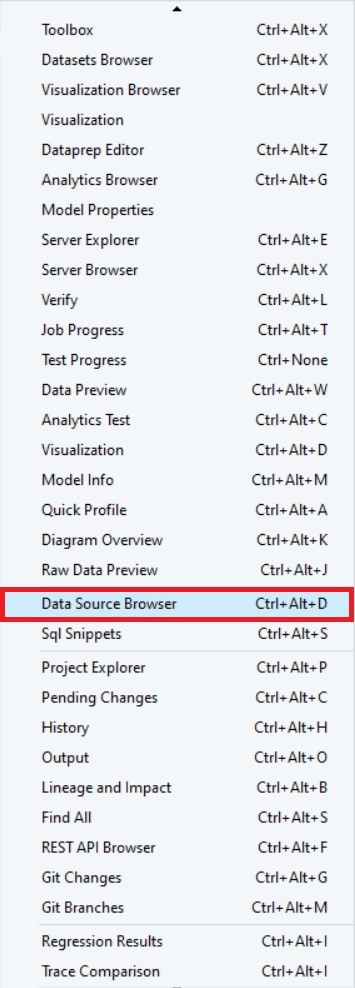
- Add Database Server: In the Data Source Browser, select the “Add Database Connection” option to add a new database server. Provide the necessary details to configure the SQL Server database connection and click “OK.”
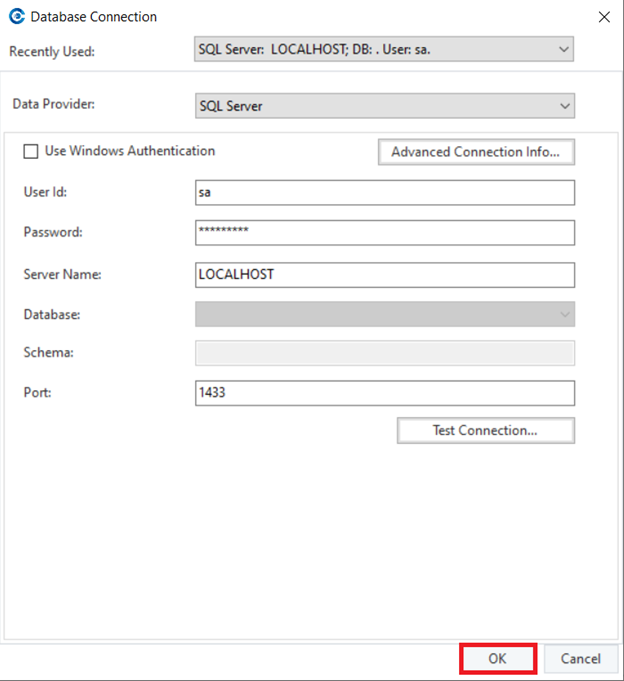
- Generate CRUD Flows: After successfully connecting to the SQL Server, right-click on the desired database from the list displayed in the Data Source Browser. From the context menu, select “Generate CRUD flows“. This action triggers the automatic generation of CRUD (Create, Read, Update, Delete) API endpoints based on the database schema.
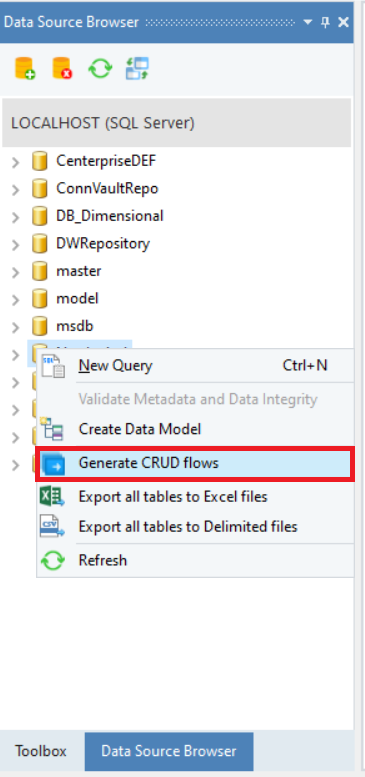
- Select Table and Operations: Once the CRUD flow generation window opens, users can select the specific tables within the database for which they want to create API endpoints. Users can also choose the CRUD operations they wish to enable for each table.

- Configure Endpoint Settings: Within the CRUD flow generation window, users can configure various endpoint settings, such as enabling sorting, filtering, or specifying the execution type (synchronous or asynchronous) for each API endpoint.
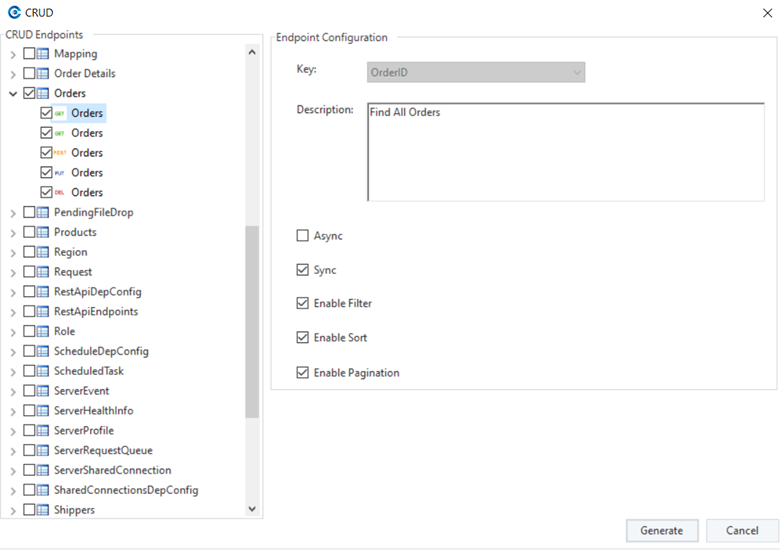
- Deployment: Finally, deploy the generated API endpoints directly with a single click or group them for deployment. This step ensures that the APIs are accessible and ready for application or other systems use.
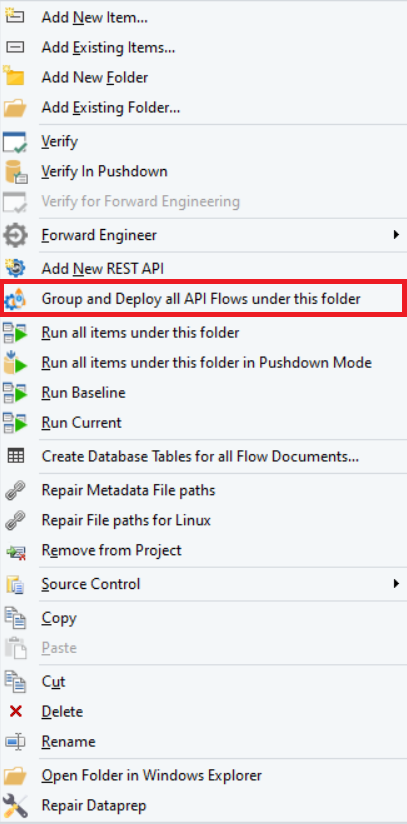
Conclusion
SQL Server APIs offer a powerful means to fully leverage the data infrastructure. These APIs can significantly enhance an organization’s operational efficiency and agility by enabling seamless integration and efficient data management. Leveraging no-code solutions simplifies the API creation process, making it accessible to many users and reducing the costs associated with traditional development methods.
Astera is a leading no-code API lifecycle management solution, offering a comprehensive suite of functionalities beyond API creation. For instance, Astera automatically generates test flows to rigorously test the APIs you design and deploy, ensuring robust performance and reliability.
Additionally, users can view their API deployments in a Swagger UI directly from the deployment section of the Server Browser, offering a seamless and intuitive experience. Furthermore, Astera supports custom connectors for a wide range of third-party APIs, enhancing its versatility and adaptability to various business needs.
Simplify API creation for SQL Server using Astera. Sign up for a free 14-day trial today and experience the benefits of our solution.
 Astera AI Agent Builder - First Look Coming Soon!
Astera AI Agent Builder - First Look Coming Soon!


